Understanding how geology controls the appearance of rock and learning how to accurately capture rock features will add depth and realism to your next landscape painting.
By Susan Bednarz
This is not an article about how to paint, but instead how to see and understand rock as an element so that you can create more realistic landscape paintings. Although I am relatively new to painting, as an engineering geologist, I already have a good understanding of how geology controls the appearance of the landscape around me.
Geology provides the underlying structure that unifies the landscape. Geologic processes control the height and steepness of mountains, the thickness and orientation of the rock layers, the pattern of fractures (cracks) cutting across rock outcrops, and the presence and orientation of ridges and ravines. You must see and convey this underlying geologic structure to make your paintings of rock look realistic.
Without getting into a detailed discussion of geology, there are two key characteristics of rock that you need to understand:
Rock is fractured and these fractures form zones of weakness that create lines and linear depressions between intact blocks of rock. These same fractures control the angle of tops and sides of cliffs and hillsides. The amount of fracturing is variable, but there is a general consistency to the orientation of fractures on both a small scale and a large scale across a landscape.
Most rock is layered. Rock layers usually maintain the same thickness, color, and texture across an outcrop, cliff face, or hillside. Layers also show variable resistance to erosion depending on the hardness of the rock. Some layers form ridges or ledges and others form depressions or slopes. Rock layers are frequently inclined or folded. One or more folds may be exposed, or just dipping layers may be visible.
Be Consistent When Painting Rocks
The key to accurately portraying rock is to identify the thickness/spacing and dip of rock layers and fractures and keep these features consistent across your painting. Similarly, maintain the color, texture, and resistance or prominence of a layer. Rock layers and fractures are remarkably persistent. The layer on the bluff in the foreground may also be visible in the hillside in the background, although they may not be connected. The angle of the fracture line on the rock outcrop in the foreground often matches up with the angle of a ravine in the background.
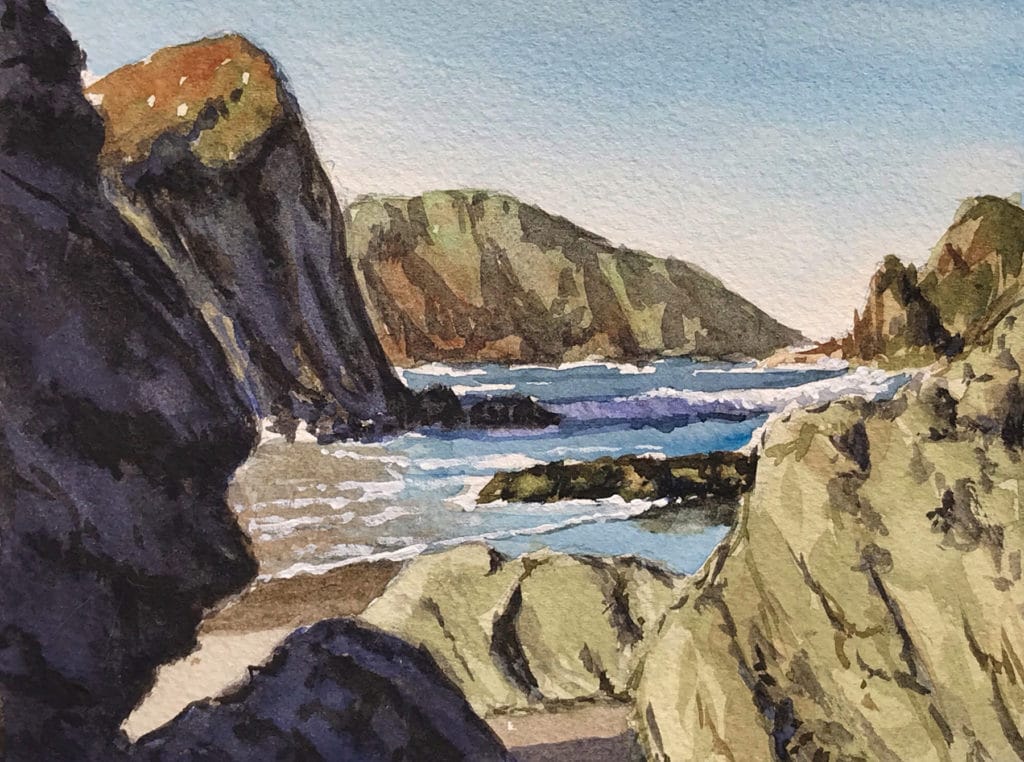
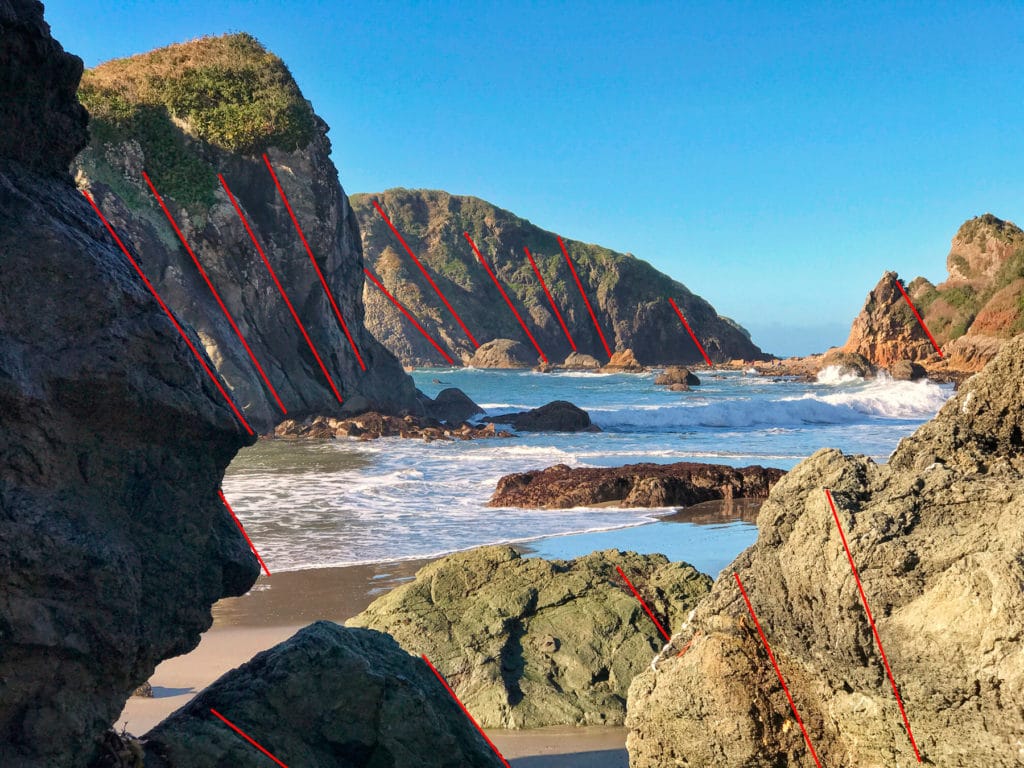
Perspective — Not Just for Buildings
Rock follows the same laws of perspective that we use for drawing buildings and other manmade structures. Just like horizontal features on buildings, rock layers will appear to converge at the horizon. Layers at the top of a cliff appear to be more steeply inclined than similar layers near eye level. Perspective causes layers at cliff edges to appear to curve slightly downward, even if the layers are horizontal.
Dipping rock layers will vary in elevation with increasing distance. If a layer dips downward away from you, it will be located lower on a cliff or hillside in the background. Alternatively, if a layer is inclined toward you, it will appear higher on the hillside in the distance. Combining layer dip with perspective can be complicated, but being aware that both will impact your painting is half the battle.
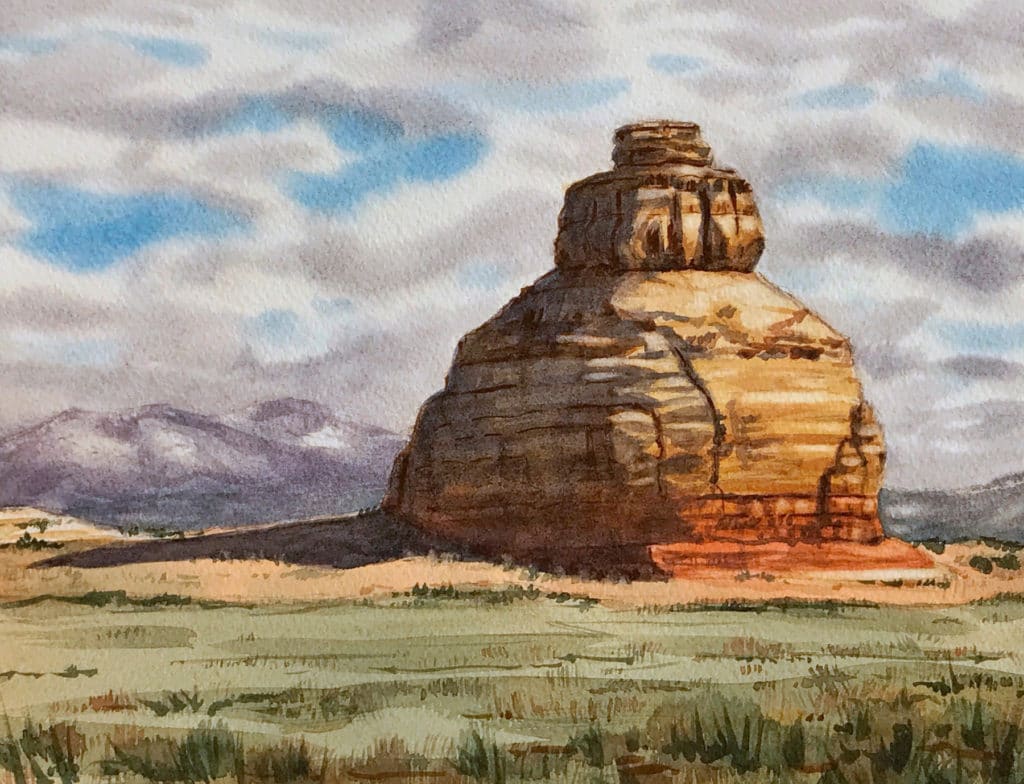
Subtle perspective is shown in this painting of a layered butte in southwestern Utah. Not only do the rock layers dip gently toward the horizon, they are also slightly rounded at the edge of the butte. The combined effect gives greater dimension to the painting.
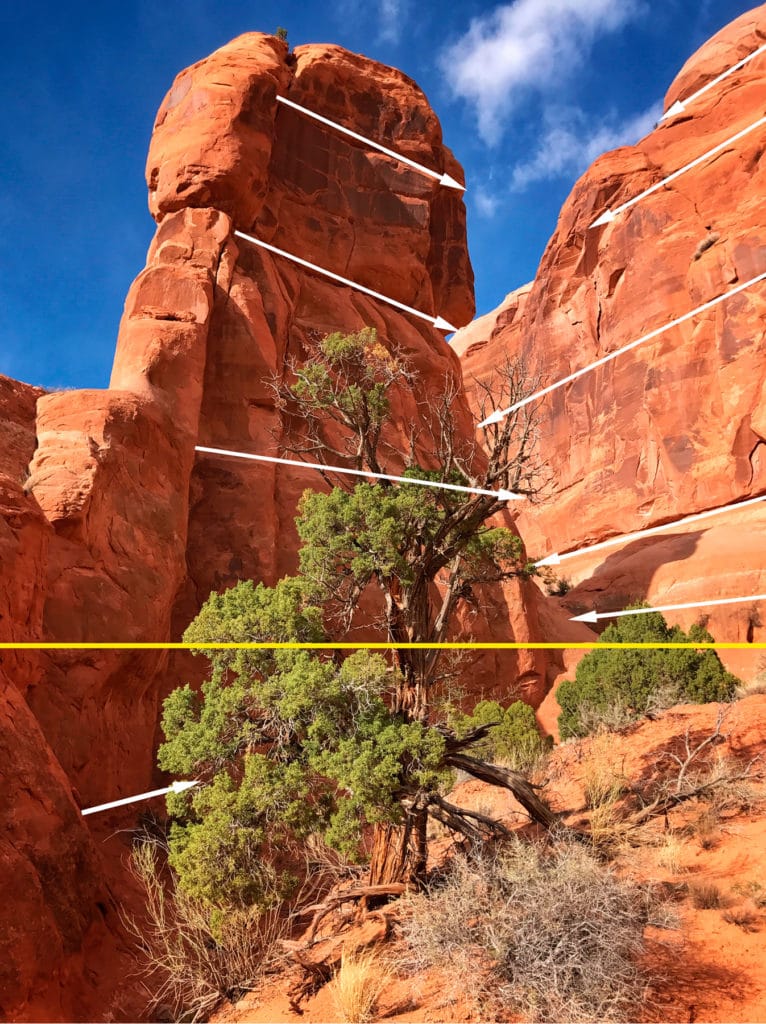
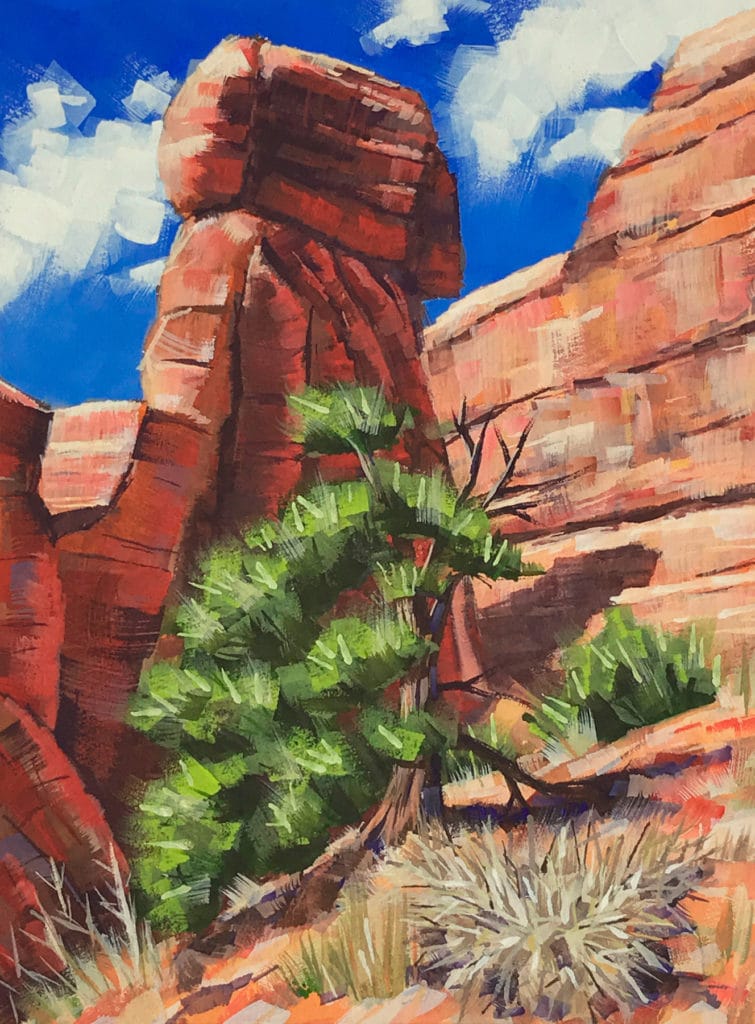
No Stone Walls
Rock cliffs and smaller outcrops usually contain numerous intact blocks that are bounded by both angular and rounded edges. Fracture surfaces form the angular edges, while weathering creates the rounded edges. Even though the boundaries between blocks of fractured rock are frequently perpendicular, be careful not to paint the size of each block exactly the same, round all four edges, or rotate the blocks to create the look of a manmade stone wall. In nature, rock exposures contain variable shaped blocks that are bounded and interconnected by two or more groups of fractures that are often perpendicular to each other.
Similarly, cliff faces and edges are almost never perfectly vertical or completely flat. Weaker and stronger layers form depressions and ledges. Fractures form blocks that extend out from the cliff face. Look for variation in resistance between different layers or between intact and fractured rock that creates ridges or hollows in the rock face. Smooth, vertical cliffs are rare.
When Painting Rocks, Variety Adds Interest
The color, texture, and shape of rock change with exposure to the elements. This change, known as weathering, usually lightens the color of dark rock and darkens the color of light rock. The amount of color change is proportional to the duration of exposure (amount of weathering). Iron and manganese stain and coat rock red, yellow, brown, and black. Color variations may form horizontal and/or vertical bands across a cliff face. Additionally, weathering causes rock to become pitted as less-resistant minerals decompose and wash away. Including weathering-induced color and texture variation across a rock exposure adds interest to your paintings.
Boulders Versus Outcrops
In order to paint realistic looking rock, you need to look at and understand the difference between boulders and outcrops. Boulders are large rectangular, tabular, or rounded blocks of rock that have been moved and rotated. They vary in size, shape, and orientation and usually have both angular and rounded edges. Texture, color, and even the type of rock usually vary between adjacent boulders.
Outcrops consist of one or more large rock blocks that are connected to each other and attached to the underlying bedrock. At first glance, outcrops look like a collection of boulders; however, the connected blocks have the same color, texture, layering, and fracture pattern. Similar to boulders, outcrop blocks are both angular and rounded, but the underlying structure is consistent across all the blocks. This structure generally matches that of the surrounding landscape.
5 Tips for Painting Realistic Rock in a Landscape
- Identify the underlying geologic structure of the landscape. Be consistent when painting the orientation of layers, cracks, ravines, and ridges.
- Apply perspective to rock — layers converge at the horizon and curve downward slightly at the edges of cliffs or buttes.
- Cliff faces are rarely perfectly smooth or vertical. Look for subtle ridges and depressions across the rock face.
- Show variation in rock color and texture. Weathered rock is either lighter or darker than fresh rock and is often rounded or pitted by wind and water.
- Fractures on intact rock outcrops follow the underlying rock structure. Loose boulders have randomly oriented fracture surfaces and variable color and texture.
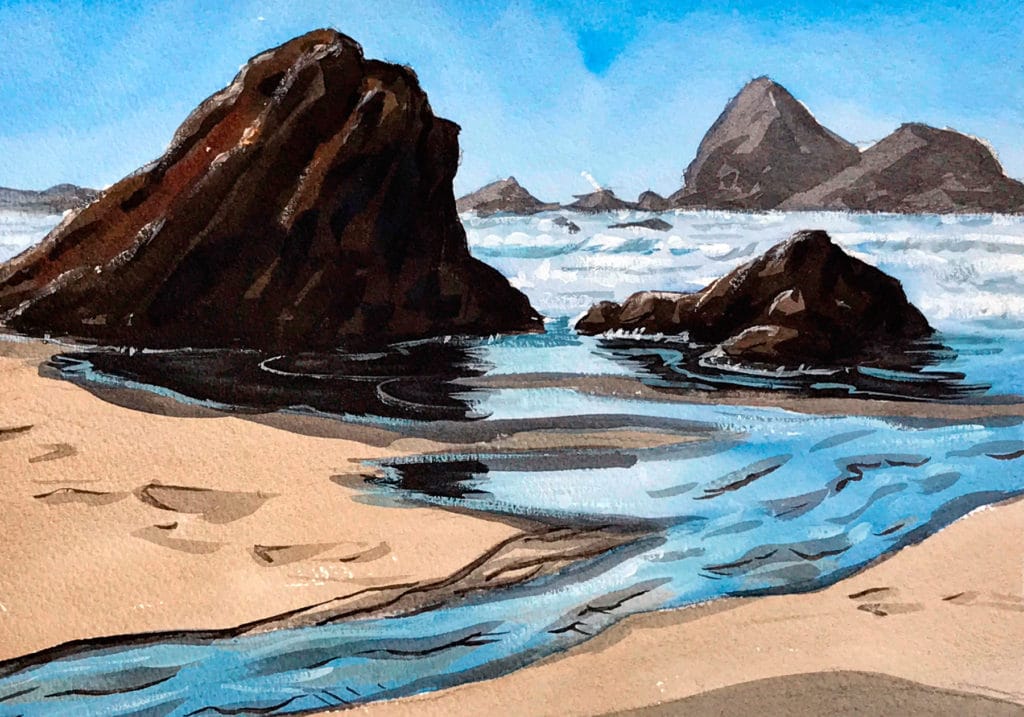
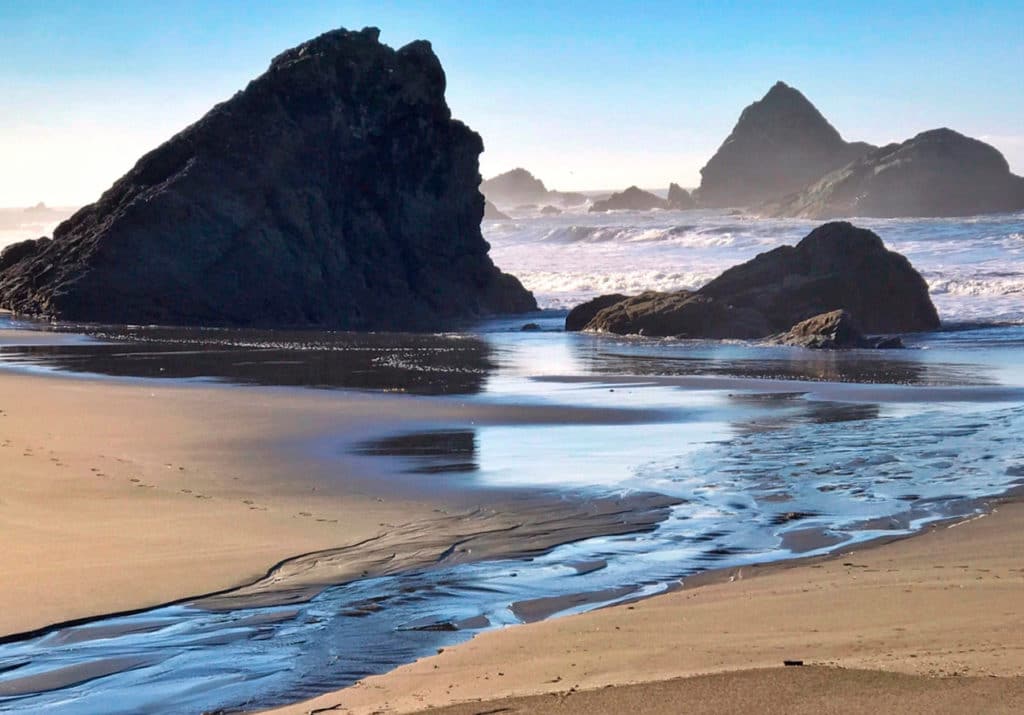
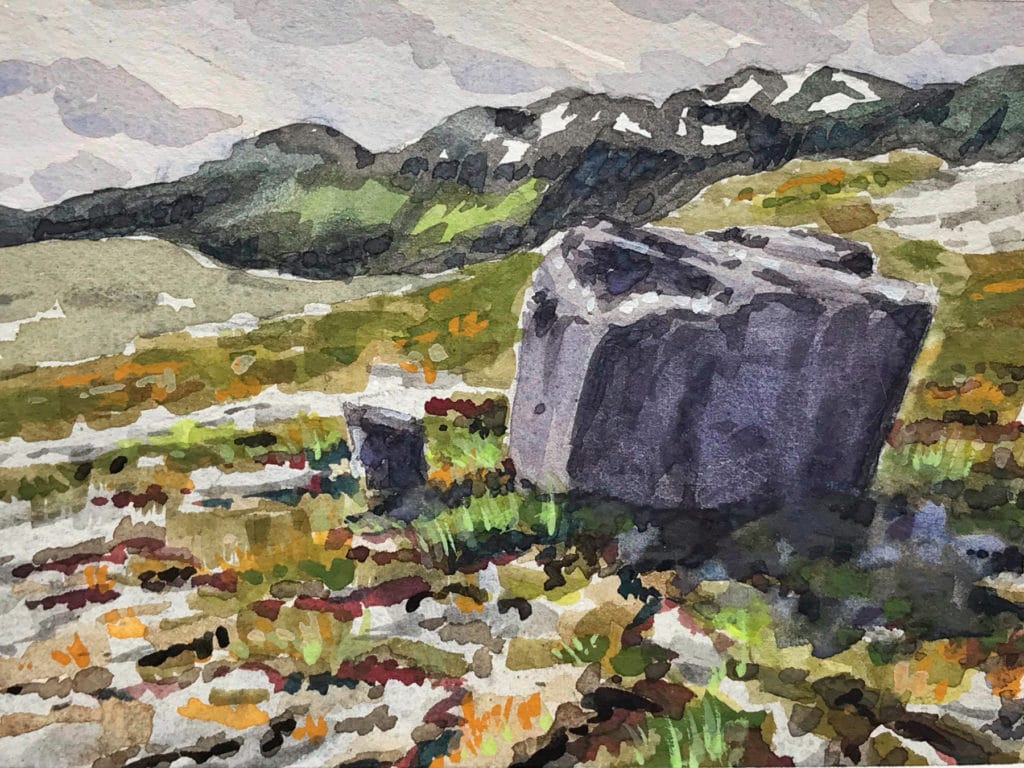
Susan Bednarz lives and paints on a farm in Winlock, Washington, when she isn’t traveling to investigate engineering geology projects.
SusanBednarz.com
@SusanBednarz

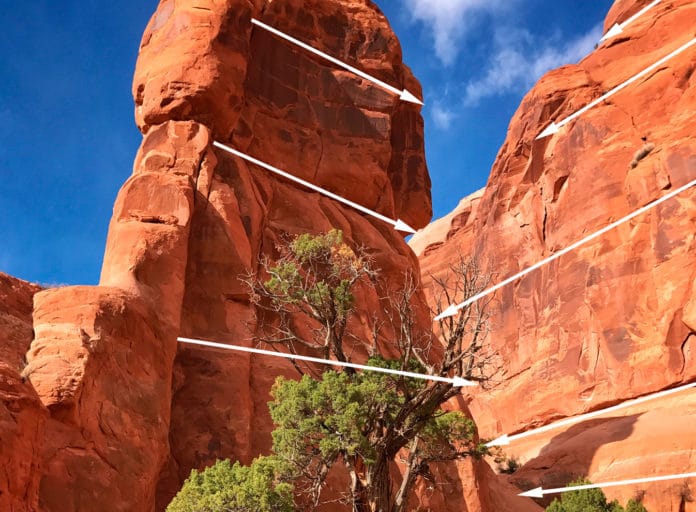


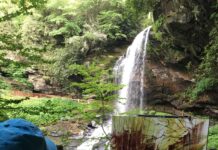
What a great perspective and lesson…loved it. Thank you…..
I really enjoyed your text on the painting of the rocks and cliffs. It made allot of sense : meaning the way the rocks form as time passes. The weathering and just over all with the 5 steps and tricks.
Thank you for the detailed article regarding ‘get your rocks right’…..it was extremely helpful in giving me a different perspective….
Fabulous concepts to incorporate in my paintings! Do you have more articles? I especially like when you show the white and yellow lines. I also understand better your concepts and observations when you showed the actual photo then your painting (which do not look like a beginners to me – way to go!). I didn’t really understand the section “Perspectives – Not just for buildings”. I would love an elaboration and possibly pics on that topic if you do future articles. Thanks so much for your insight Susan!
Good article. I am always looking for suggestions for improving my paintings. I’ve looked at a lot of paintings online, and seen many southwest and etc. landscapes. Some, not all of course, have the “Rocky Road” look to their rocks. It’s easy to fall into that look – brushes can easily make desert dessert if you aren’t careful. You address that without the wise guy cracks I’ve just made haha. I can’t be the first to notice. And your art doesn’t have the look, I’ve noticed.